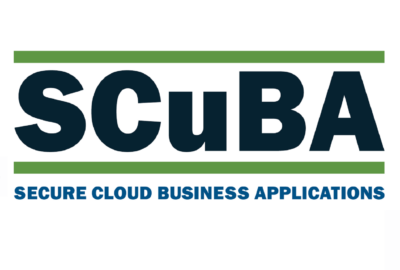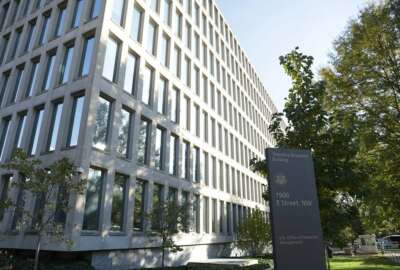First Look
Cybersecurity
Read more
Workers at the Social Security Administration are sounding the alarm
In today's Federal Newscast, employees at the Social Security Administration are warning that the agency's workforce challenges have become even more troubling.
- Employees at the Social Security Administration are warning that the agency's workforce challenges have become even more troubling. At a union rally last week, SSA workers said low pay, high turnover and a 25-year low for staffing levels are causing delays in the agency's public-facing services. To address the challenges, the American Federation of Government Employees is calling for an even larger budget for SSA in fiscal 2024, $1 billion above the White House's initial proposal. (SSA employees warn staffing, funding crisis will lead to people not receiving benefits - American Federation of Government Employees)
- Most federal employees will see a few extra hours of annual leave for 2023. But there are a few stipulations. Those extra hours of annual leave come from a 27-pay-period year this year, rather than the usual 26 pay periods in most other years. Depending on the individual, that means feds will get between four and eight additional hours of time off. But there is a small catch. If the extra hours put feds above their carryover limit on leave, they'll have to "use it or lose it" by Jan. 13 next year. The majority of federal employees have a cap of 240 hours, or 30 days, of leave that they can carry over to the following year. The change to leave will not affect the number of pay days that federal employees get for 2023.(Feds will get a few more hours of annual leave this year, but there’s a catch - Federal News Network)
- Enlisted airmen in 70 different specialties will get special duty assignment pay next year. The Air Force reviewed assignments that it calls extremely demanding with unusually challenging responsibilities, and made them eligible for the extra pay. Of the specialties approved, four were new requests that were certified for the first time, 48 were recertified at their current pay rate, 11 increased rates and seven decreased rates to maintain parity with specialties of similar duties, responsibilities and training. The changes will take effect Oct. 1.
- New changes to the Army’s payroll and human resources system should make it easier to use. The Integrated Personnel and Pay System-Army, called IPPS-A provides basic HR and payroll services for over a million soldiers. Improved user experience includes a help desk-like system for human resources where a soldier can generate a ticket online and get the problem resolved. The program is also adding extra staff to improve payroll procedures and give the program better auditability.(IPPS-A expands services for Army payroll and human resources - Federal News Network)
- The Army picks a familiar face to lead its next phase of its IT modernization effort. Leo Garciga will become the second civilian to be the Army's chief information officer. He replaces Raj Iyer, who resigned after more than two years in February. Garciga comes to the CIO's office after spending four years as the director of information management for the Army G2. Before working for G2, Garciga was the chief technology officer for the newly created Joint Improvised-Threat Defeat Organization, which moved under the Defense Threat Reduction Agency in 2016. He also served in the Navy for 11 years.
(Garciga tapped to become new Army CIO - Federal News Network)
- Agencies will have five more years to order IT services from the Alliant 2 governmentwide acquisition contract. The General Services Administration exercised the GWAC's five year option just eight months after increasing Alliant 2's total ceiling to 75 billion dollars These changes reflect both the popularity of Alliant 2 and the time GSA will need to get Alliant 3 in place. GSA expects to release the solicitation for Alliant 3 during the first quarter of fiscal 2024. Since 2018, agencies have spent almost $19 billion through Alliant 2.(GSA extends federal access to technology solutions - General Services Administration)
- Artificial intelligence is topping headlines these days, but it’s just one of many technologies the Department of Homeland Security is prioritizing in the coming years. DHS’s Science and Technology Directorate published its latest technology centers research agenda earlier this month. The agenda lays out S&T’s major priorities over the next three years. In addition to advances in AI and autonomous systems, the directorate is also putting resources behind areas like biotechnology, data security, digital identity and novel manufacturing technologies. (DHS Science & Technology Directorate publishes technology centers research agenda - Department of Homeland Security)
- Agencies are working on common cybersecurity standards and configurations for widely used business applications. The Secure Cloud Business Applications program (SCuBA), finalized its Technical Reference Architecture and released new visibility guidance today. The SCuBA program is run by the Cybersecurity and Infrastructure Security Agency. Chad Poland is CISA’s manager for cyber shared services. “We're trying to provide actionable guidance that helps these organizations secure their environments.” Poland said. CISA is already testing out security configurations across the Microsoft 365 suite, and the agency plans to release draft configurations for Google Workspace later this summer.(CISA finalizes key guidance for agencies to secure cloud services - Federal News Network)
Copyright © 2024 Federal News Network. All rights reserved. This website is not intended for users located within the European Economic Area.
Eric White
Eric White is news anchor and Federal Drive producer at Federal News Network.
Follow @FEDERALNEWSCAST






